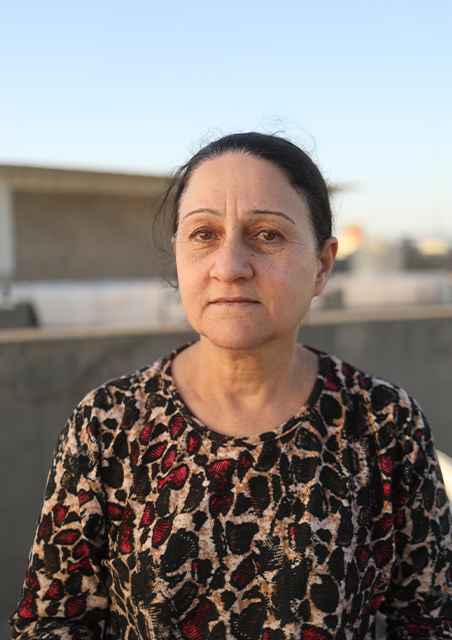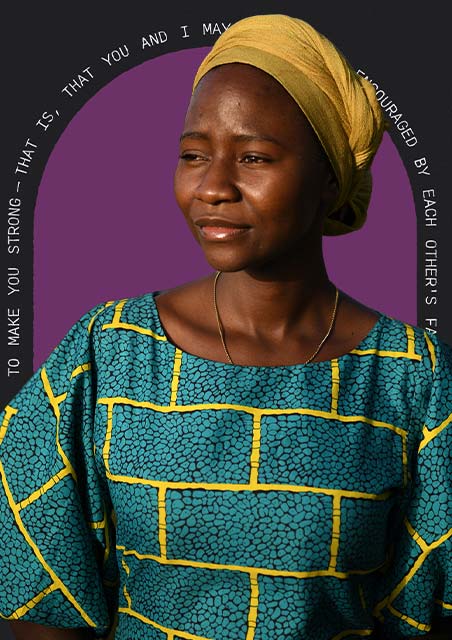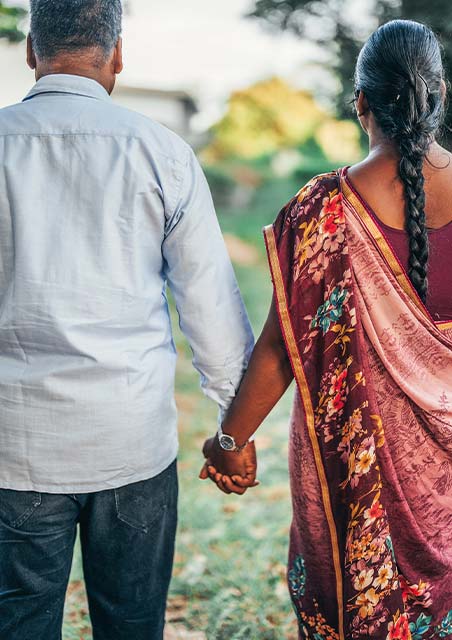India: Temporary Christmas release of Christians renews debate about false convictions
Two of seven Indian Christians who have spent nearly a decade in prison were granted temporary parole over the Christmas period to spend time with their families. The Christians were convicted of murdering a Hindu leader in 2008 – a murder which sparked the worst case of anti-Christian violence in India’s history. But evidence seems to be mounting that their convictions – and those of the other five defendants – may be false.
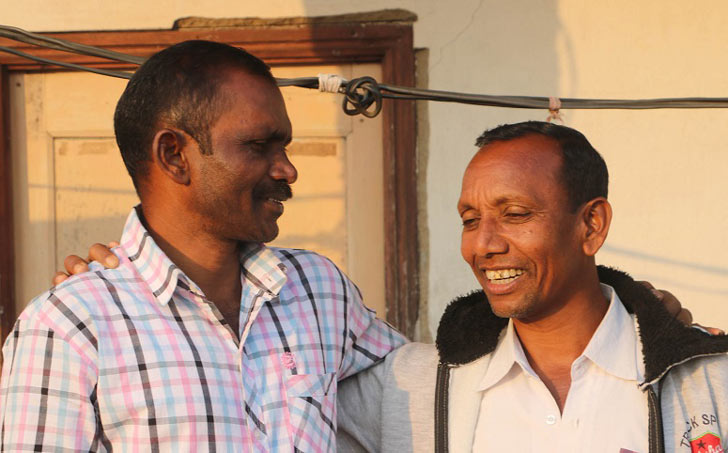
Two of seven Indian Christians who have spent nearly a decade in prison were granted temporary parole over the Christmas period to spend time with their families. The seven Christians were convicted of murdering a Hindu leader in 2008 – a murder which sparked the worst case of anti-Christian violence in India’s history. Gornath Chalanseth and Bijay Kumar Sanseth returned to prison on 6 January, after two weeks on parole. But evidence seems to be mounting that their convictions – and those of the other five defendants – may be false. Six of the seven are illiterate, and they all continue to maintain their innocence.
Swami Laxmanananda Saraswati was a Hindu monk and an activist for the welfare of India's many indigenous, and impoverished, tribes. On 23 August 2008, a mob of about 50 people surrounded his hermitage. Several men opened fire, killing Saraswati and four others. Even though Maoist Naxalite terrorists claimed responsibility for the attack, a rumour circulated that Christians were responsible. Soon, a wave of indiscriminate destruction was launched against Christians, whom many Hindus considered responsible. Saraswati was prominent in the Viśva Hindu Pariṣad, or VHP, a Hindu nationalist political party, and took a hard line against Christians attempting to convert Hindus. Hindu mobs began rioting. In the three months following the incident, nearly 100 Christians were killed and 300 churches and 6,000 Christian homes were damaged. More than 50,000 Christians were displaced.
’No shred of evidence’
By the end of 2008, the seven – Chalanseth, Sanseth, Durjo Sunamajhi, Bhaskar Sunamajhi, Budhadeb Nayak, Munda Badamajhi and Sanatan Badamajhi – had been arrested. In 2013, they were found guilty of the murder by the trial court and each sentenced to life imprisonment.
The convictions shocked India’s Christian community, which was still reeling after the deadly attacks, and Christian advocates have been fighting for their release ever since.
Indian Christians have demanded their release. Recently, Catholic journalist Anto Akkara launched a book, Who Killed Swami Laxmanananda?, outlining the reasons he believes they are innocent.
“There is absolutely no shred of evidence that links these people to the murder,” he said. “So my question is: why are these people in jail?”
“The whole case is a blot on the face of India’s judicial system – why have these illiterate, innocent people been convicted? If it goes on like this, these poor people will die like convicts in jail and history will say Christians killed the Swami.”
A conspiracy?
The website release7innocents.com outlines the major discrepancies and apparent injustices in the case against the Christians.
“The trial court convicted the seven accused and sentenced them to life imprisonment on the basis of a fabricated Christian conspiracy theory despite hardly any credible evidence brought before the court,” it states.
It then adds that in June 2015 “two top police officials – who had relied upon the same conspiracy theory to ensure the conviction of the innocent Christians – have testified before the Kandhamal judicial inquiry commission that the allegations were false.” However, the website notes that the appeal hearing has since been “repeatedly” postponed.
The website complains that discrepancies within the case against the seven were apparent right from the start, when Hindu fundamentalists blamed Christians for the Swami’s murder.
It is clear as well, that the murder was deliberately used to incite violence against Christians. In the days that followed his murder, the Swami’s body was taken across Kandhamal, “accompanied by thousands of Hindus … to incite the primordial passion of revenge among Hindus in one of the least developed districts of Odisha”, notes the website.
It is no coincidence that three-quarters of the damage done to Christian homes took place along the route of the funeral procession. Among the slogans shouted was, “Kill Christians and destroy their institutions.”
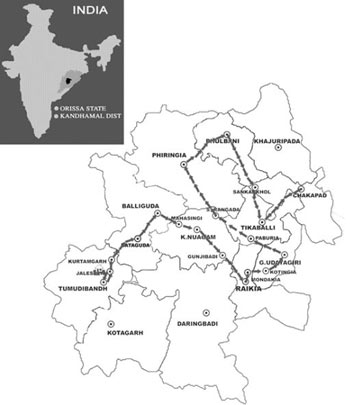
The victims
1. Sanatan Badamajhi
Sanatan Badamajhi’s wife Badusi said that a few days before her husband’s arrest, on 4 October, 2008, some of the Hindu village leaders had warned him that he would soon be arrested. But on the day of the Swami’s murder, Badamajhi, 36, had been tending cattle and sheep, according to a Hindu neighbour, Nakula Mallick. “Police never came to investigate or ask anything about him. If we had been called, we would have testified for him in the court,” said Mallick.
The judge said a gun was seized from Badamajhi’s house, but his wife says they never owned a gun. Police also claimed to have seized an axe from the house, but his wife said the police brought the axe from the house of Mukantho Mallick, a Hindu neighbour, who had accompanied the police to identify the house. “Later, Mukantho has been repeatedly complaining that the police took away the axe. I had only one axe and it is still in my house,” she said.
2. Munda Badamajhi
Munda Badamajhi, 34, was arrested on the night of 4 October, 2008, at his home in the village of Duringpodi.
The prosecution said it recovered a gun from Badamajhi’s home, but his wife, Bandigudali, said her husband did not even know how to use a gun.
“We never had a gun and my husband could not even use a gun,” she said. “This is shocking.”
3. Durjo Sunamajhi
Durjo Sunamajhi, 35, was woken up on the night of 4 October, 2008, when police barged into his house in Budapada village and took him away, as well as the barrel of a broken gun that they found in his house. His wife Gumili said her husband was on a train towards Kerala on the day of the Swami’s murder and had never touched the gun, which she said was an old and broken hunting rifle last used by her husband’s grandfather.
“The government claim is that they recovered two guns [from the houses of these people], but actually only one barrel of a broken gun, which has not been used for years, had been picked up,” said Akkara. “[Gumili] says her husband never used it, her husband’s father never used it; only her husband’s grandfather used it. Imagine! And there was only a barrel of the hunting gun. Now, the government claims to have recovered two guns from two houses, but in the judgment the judge says he has got the three guns, and he names the three! How is that possible?”
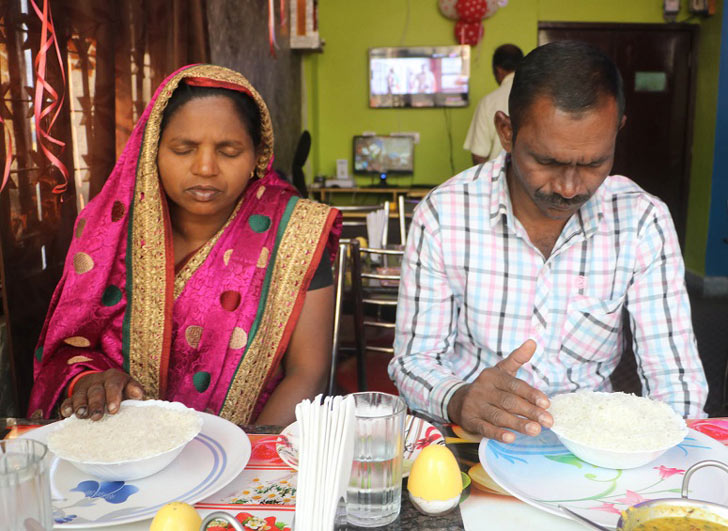
4. Bijay Kumar Sanseth
Sanseth’s wife, Pabitra, said police phoned her on 12 December, 2008, and told him to report to the police station the next day. He did so, and has been detained ever since. However, police recorded events differently, saying that on 12 December Sanseth met three of the other accused Christians at a Maoist meeting in a jungle near the village of Sartuli. They added that Sanseth, 42, had been overheard discussing plans to murder the Swami outside Kotagarh High School. This claim was attributed to a witness, Mahasingh Kanhar, who initially denied the claim, but eventually endorsed it during a retrial.
“Wherever I go, people tell me: ‘He was a good man. Why he is in jail?'” said Sanseth’s father, Salei. “The popularity of my son and his high contacts with government officials have led to this tragedy. Many were jealous of him.”
5. Bhaskar Sunamajhi
Bhaskar Sunamajhi, 32, was playing cards with his friends in the village of Kutiguda when police came to collect him on 13 December, 2008.
“You can return tomorrow,” his wife heard them say, when they took him away. But after more than seven years, Sunamajhi has not returned home. The judge said Sunamajhi was ‘hand in glove’ with the Maoists and had undergone several weeks of training at a Maoist camp. However, his wife Debaki said he ‘never ventured [far] from home’.
Biracha Paraseth, a neighbour, added: “This is a total lie. He was with us on the day [the Swami was killed]”.
Pavitra Sanseth, another neighbour, added: “He is a good man. He will not do such a crime like killing of a Hindu leader. All of us feel very bad about this. Sir, if we all could have gone [to court] and explained his innocence, please tell us how we can help and ask for his release.”
6. Budhadeb Nayak
Before his arrest, one of the village elders urged Nayak, 42, to go into hiding, but he refused, saying he had done nothing wrong. Police later came to his house, threatening his eldest son, 20-year-old Lingaraj, that they would soon arrest his father. On the night of 13 December, 2008, they came back and Nayak was arrested.
“He was wearing only a [sarong]. They tied his hands to take him away. He asked for clothes and I gave him a shawl,” recalled his wife, Nilandri.
Three days later, the family visited him in Balliguda jail. The police said he had been with Maoists in the jungle on 12 December, alongside three of the others accused.
7. Gornath Chalanseth
Chalanseth, 41, was taken into police custody on 13 December 2008, but initially suspected nothing as he was active in politics.
His cousin, a pastor, accompanied him to the police station, and saw him taken away.
A couple of days later, after his cousin had not returned, he went back to the station and heard he had been charged with murder.

